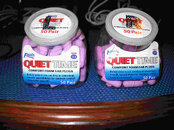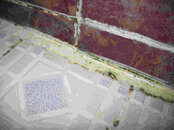GoorglinGeorge
Registered
- Messages
- 30
- Reaction score
- 0
Kararu Dive Voyages – Cheng Ho – August 2007
or
Luxury Liveaboard It Is Not
Summaryor
Luxury Liveaboard It Is Not
It is rare to find a trip and a liveaboard where the Dive Managers and the boat evoke so many memorable comments. The boat is large and provides many outdoor spaces for lounging. Everything else about the boat to include food is substandard.
To and Fro
At approximately 1.5 hours before the scheduled 11:30 AM flight from Denpassar to Bima I arrived at the domestic terminal. The Kararu representative was waiting and provided me with my ticket.
Check-in was done as a group and there were no excess baggage charges. Kararu also paid the 30,000 Rupiah departure tax. The flight to Bima left ahead of schedule. The aircraft was an F28 (Fokker) with 3-2 seating. The seats were the most closely spaced that I have seen in a long time and I was quite happy that the flight time was 45 minutes.
The process of getting from Bima back to Denpassar (Bali) was relatively painless. One of the best parts of the trip is the well organized departure from the boat. Hergen, one of the Boat Managers, will take the luggage and tickets to the airport at 0930 to check in the guests. This is being done early since two other boats are also returning to Bima today. Kararu pays up for up to 50 kg of luggage and the departure tax. Since the flight is at 1250 the departure from the boat will be at 1100+.
A highlight was when all of the proper folk from England and America elbowed their way to the boarding gate and then ran to the airplane since the aircraft it was open seating.
The Boat
The Cheng Ho is a Taiwan owned boat that is being leased by Kararu. It is a traditional wooden Panisi design. The boat is not new and this shows in many areas which are much worn. The boat is made entirely of wood and is 144 feet in length. The boat was originally used for sightseeing cruises and has been adapted for diving operations.
At the boat briefing Hergen, one of the Dive Managers, noted that the has three "uniquenesses".
(1) When it moves it can make a lot of noise due to the movement and shifting of the wood. Therefore they provide a large supply of ear plugs.
(2) When it rains there can be leakage all over the boat. You should be careful not to put anything on the floor of your cabin or anywhere else on which water might fall. It did rain the first night and I can confirm the boat leaks.
(3) The wood in the boat moves but its pipes do not. Therefore if you find the pipes leaking then call the crew and they will come and tighten the pipes.
The boat has four levels accessible to the passengers. At the lowest level there are about eight cabins. Some cabins are twins and others are doubles. There is variation in cabin size and layout that affects the amount of storage available in the cabin. These cabins have port holes.
On the main deck there is a large salon that is the main dining area. The salon has spaces for charging and is also where the buffet is set up for meals. At the stern of the boat there are also a couple of small cabins which their occupants referred to as steerage.
At the bow of the boat is the dive deck. This area has benches in which tanks are located. A lift up cover on the seat of the bench provides a storage area for masks, weight belts, and lights. It was very easy to damage equipment by having it become snapped or crushed by the lift up cover. This is a wet storage area.
There is an "L" shaped area with counter space and cabinets for storage of camera equipment. This area is also defined as "wet" both on the surface and in the cabinets.
The next deck houses the bridge and four cabins. These cabins have windows. Above the bridge deck is a large sun deck area.
Getting Acquainted
The boat is full with 20 passengers. The dominant group is English with several American and a few other nationalities. The dive managers are Hergen and Kerri and both are American. Hergen only uses one pronoun "I". "I" only have so much hot water. "I" do this. "I" do that. There is a large Indonesian crew who number exceeds that of the passengers but only three of them were formally introduced to the passengers.
The Cabins
The cabin I have is reasonably large but not luxurious. The cabin has a double bed, a small shower, and a sink. There is one electrical outlet located next to the ceiling by the shower which means that is almost useless without obtaining an extension cord. There are two desks. One is small and the other a bit larger. There are no lights over the desk or the basin.
There is a cabinet with shelves and a rack with some hangers. There is a small towel and a wash cloth. A bar of soap is provided and in the shower there is a dispenser for liquid soap and shampoo.
Over the entire roof of the cabin is a white plastic sheet. These sheets are in relationship to the "uniqueness" of the boat when it rains. These sheets in theory keep your bed dry but many people reported that this was only wishful thinking.
The combination shower-toilet is small and extremely unpleasant. The area has a persistent smell of must and mold and the entire area has old tile and is poorly ventilated. Hot water and water pressure are limited commodities aboard the Cheng Ho. The statement of the Dive Manager Hergen is that guests should not expect that they should all be able to take showers at the same time. It is actually not a matter of even at the same time.
Once a group of divers has used up the hot water it takes from 30 minutes to forever before the centralized electrical hot water heaters can provide additional hot water. After prolonged dives in cold water this is completely unsatisfactory. During the trip several water lines broke leaving a couple of cabins without hot water.
Upon returning from one night dive in Horseshoe Bay I found no hot water. This included no water coming from the shower head at all. This was completely unacceptable after a 77 minute dive in 75F water. Other than one hot shower on the first day I never had hot water for the entire trip.
I most enjoyed Hergen repeated statement that even in the best hotels not everyone can have hot water at the same time. Hergen has obviously not stayed in many hotels where you pay $325 per night per person.
Daily Schedule
The daily schedule is nominally.
0630 Light Breakfast
0800 Dive #1
0830 Hot Breakfast
1100 Dive #2
1300 Lunch
1500 Dive #3
1830 Night Dive - If Offered
2000 Dinner
The Light Breakfast consists of fruit, fruit juice, toast, and croissants. There are the makings for tea and coffee. There is also a coffee machine. As with many aspects of food on this boat when the food is gone – it is gone – no one offers to add more.
The Hot Breakfast is an item that is selected the night before at dinner. All of the breakfast items are cooked in the morning at the same time and then either kept warm or reheated. Bottom-line is that breakfasts are downright pathetic. Many people resorted to eating oatmeal since it suffered the least but before the end of the trip the boat even ran out of oatmeal.
Lunch and Dinner are buffets. Many times barely been enough food to feed everyone at these meals. The dinner buffet is themed - Japanese, Italian, Mexican. The food is generally served lukewarm and then proceeds to get cold. Quite often food was over spiced and I speak as a person who enjoys spicy food. Bottom-line. This is not a boat for gourmet dining.





